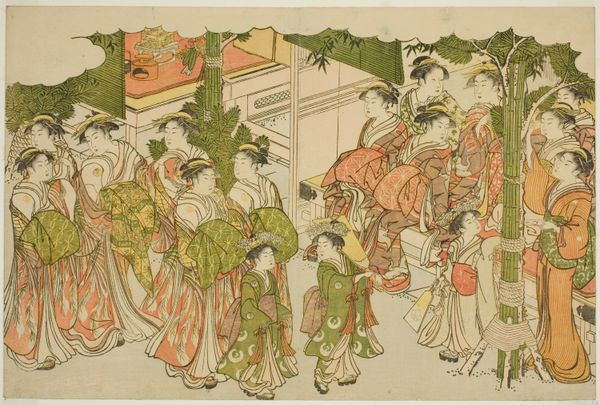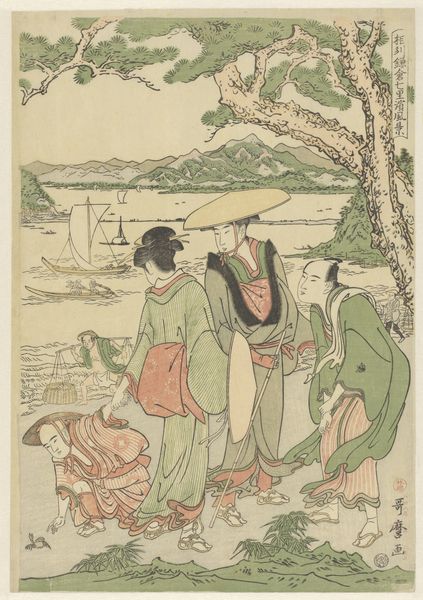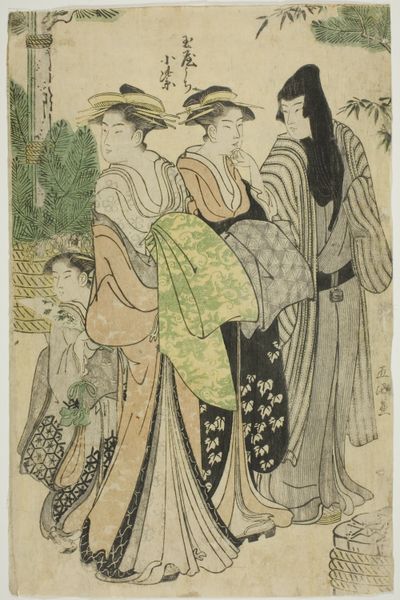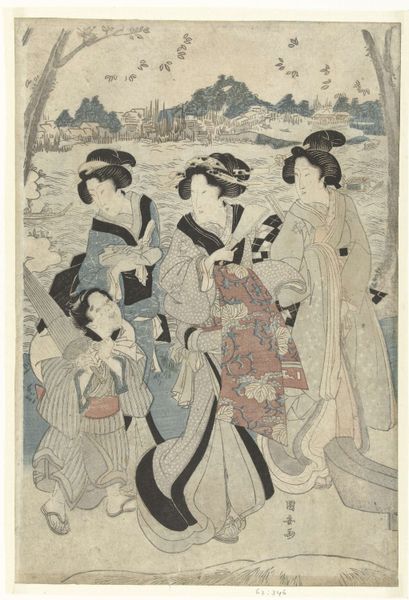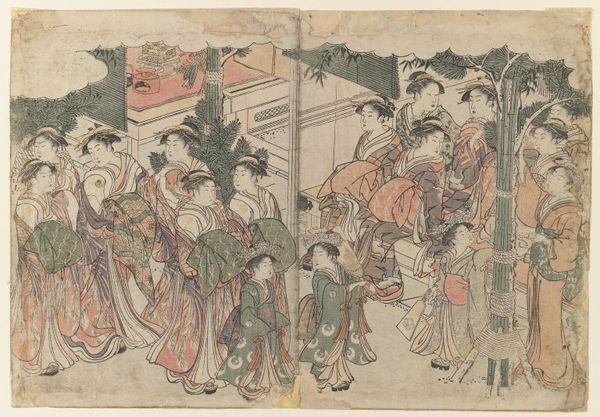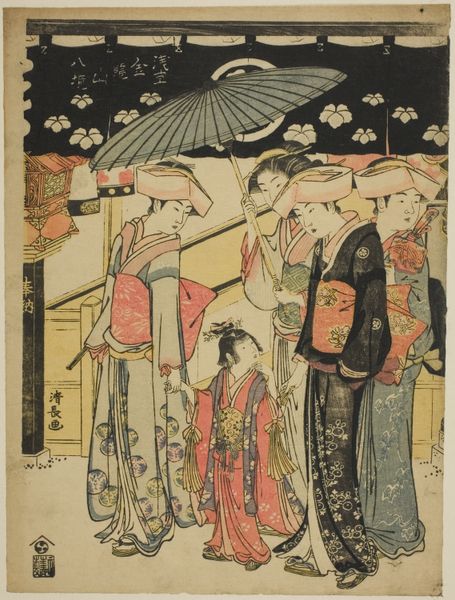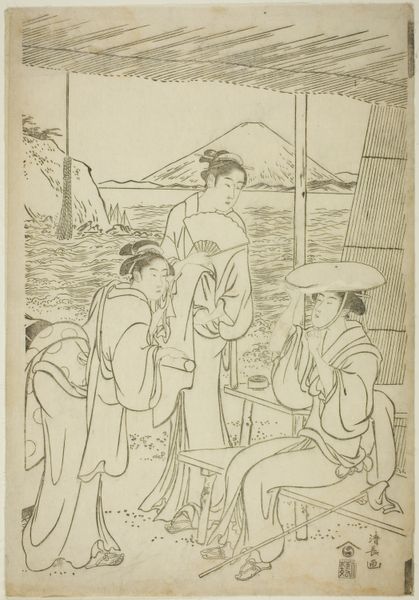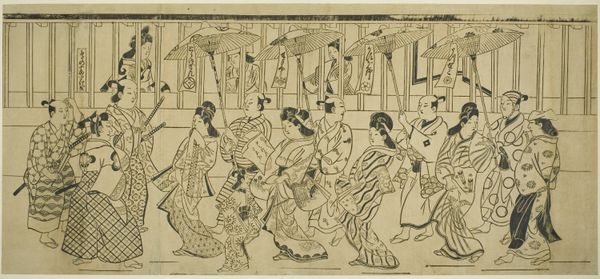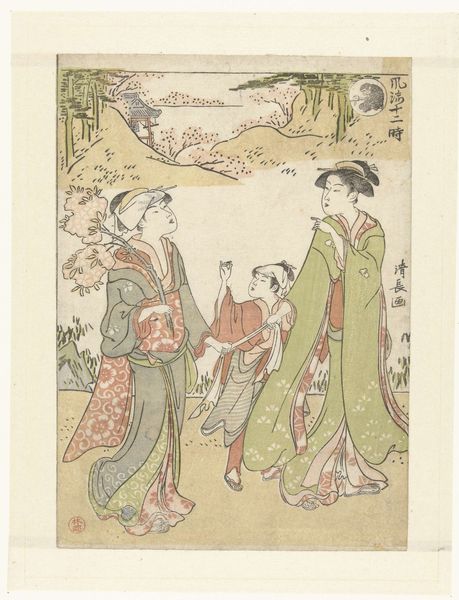
Parody of the Seven Sages of the Bamboo Grove c. 1780 - 1801
0:00
0:00
print, paper, woodblock-print
#
ink drawing
# print
#
asian-art
#
ukiyo-e
#
paper
#
woodblock-print
Dimensions: 38.5 × 27.2 cm (15 1/18 × 10 11/16 in.)
Copyright: Public Domain
Editor: So this is Katsukawa Shuncho's "Parody of the Seven Sages of the Bamboo Grove," made around 1780 to 1801. It’s a woodblock print, quite delicate and refined. It reminds me of a tranquil scene. What stands out to you in this work? Curator: I'm immediately drawn to the materiality of this piece. As a woodblock print, we have to consider the labor involved, not just of the artist, but the artisans who carved the blocks and made the paper. It prompts us to investigate the complex systems of production and consumption within Edo-period Japan, doesn't it? Editor: That's fascinating! I was mostly thinking about the figures. Curator: And how are they dressed? What kind of fabrics, patterns and dyes do you see, and what can they tell us about class and taste during that period? Were certain designs more labor-intensive and thus more expensive? Furthermore, the concept of “parody” within this piece invites inquiry. What elements are being satirized, and what social commentary is embedded within this representation of women enjoying themselves? Editor: I see…so by understanding the materials and techniques used to create this print, we gain a deeper understanding of its meaning and cultural significance. It's like reading the artwork as a historical document about production as a reflection of consumer values? Curator: Precisely! And remember, the choice of subject matter – women, pleasure, parody – speaks volumes about societal norms and deviations. This challenges the traditional art history narratives that separate "fine art" from the objects of everyday life or “craft.” Editor: That is incredibly helpful! I didn't realize how much information could be gleaned just by examining the materials and the means of its production. I will never see this type of art the same way again. Curator: Exactly. Considering those parameters will hopefully help you analyze any kind of material culture from paintings and architecture to books and instruments.
Comments
No comments
Be the first to comment and join the conversation on the ultimate creative platform.


